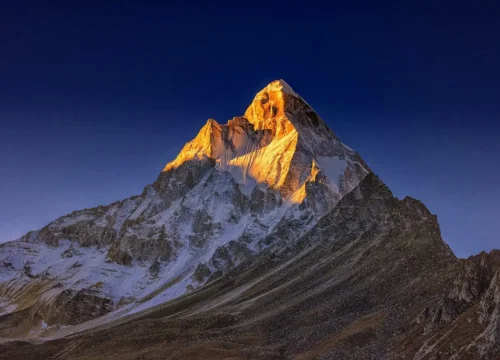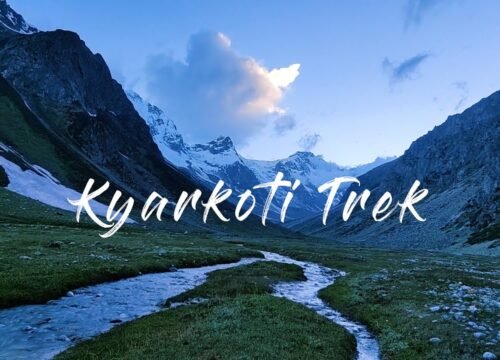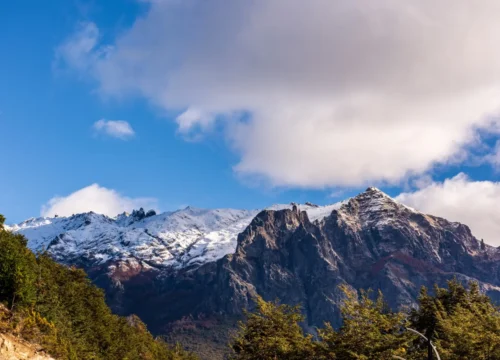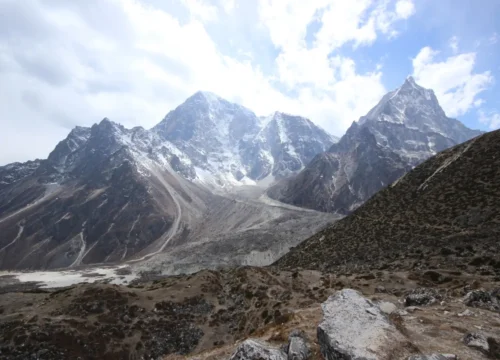- High Altitude: Risk of altitude sickness as you ascend to significant heights.
- Steep and Rocky Terrain: Challenging paths with steep climbs and rocky sections.
- Weather Variability: Unpredictable weather conditions, including sudden snow and cold temperatures.
As the second highest peak in the Bhagirathi Massif, Bhagirathi II is perfect if you want to make a switch from trekking to climbing. Located in the Gangotri National Park in the Garhwal Range of Himalayas, Bhagirathi II is 6,512M of sheer beauty rising over the Gangotri glacier. Most popular amongst its sister peaks- Bhigirathi I (6,856M) and Bhigirathi III (6,454M) which together form the Bhagirathi massif- Bhagirathi II is comparatively less technical but offers some of the best high-altitude climbing experiences with awe-inspiring views of famed peaks in the range, such as Thalaysagar, Shivling and Meru.
The first successful ascent up its icy slopes was made by Austrians Edi Ellmauthaler and Toni Messner way back in 1933. A stepping stone for some and for some a challenge in and of itself, the mountain is a thing of beauty and does its share in lending you a dream. It is a challenging endeavor taken on by climbers looking to get a taste of high-altitude climbing and for those preparing for 7000+M peaks in the Himalayas.
Since it is a technical climb which requires specific knowledge of mountaineering equipment and a specific set of skills to survive at that altitude in that terrain, this is an expedition reserved for experienced climbers only. Mountaineering certification or alternatively experience in high-altitude mountaineering and extreme temperature is a mandate to undertake this challenging expedition. The best months to climb Bhagirathi II are June and September.
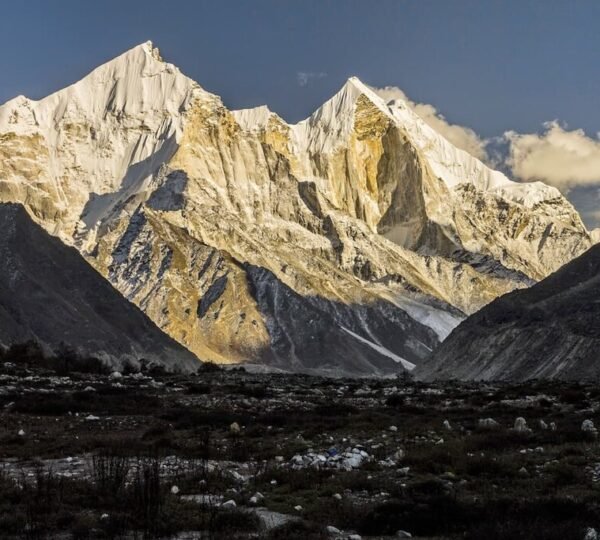
Advance Facilities
Challenge
Climbing history
After British exploration of the Gangotri Glacier in 1933, a German expedition led by R. Schwarzgruber climbed nearby peaks and did a reconnaissance of Shivling in 1938. They reported “no feasible route” on the mountain due to its steepness and the threat of falling seracs.
Shivling was first climbed on 3 June 1974 via the west ridge, by a team from the Indo-Tibetan Border Police, led by Hukam Singh. The ridge is the lowest-angle feature on the mountain, but still involves serious mixed climbing, and is threatened by the serac barrier noted by the Germans. The ridge leads to the col between the two summits; a steep snow/ice ridge then leads to the main summit.
Since the first ascent, at least ten other routes have been climbed on the peak, ascending all major ridges and most major faces of the mountain. All routes are extremely serious undertakings.
The North Pillar route was climbed in 1993 by Hans Kammerlander and Christoph Hainz.
In 2004 Shirshendu Mukherjee became the youngest person in the world to have climbed the mountain at the age of 19 as a part of an Indian expedition.
In 2005, Basanta Singha Roy and Debashis Biswas, both climbers from Mountaineers Association Of Krishnanagar (MAK), West Bengal, India, were the first successful summiters of India, as a part of a civilian effort i.e. climbed by the help of a Sherpa guide with an expedition style..
On 25 May 2012, Valery Rozov made the first BASE jump from the summit of Shivling at an altitude of 6,420 metres (21,060 ft) wearing a wingsuit.


